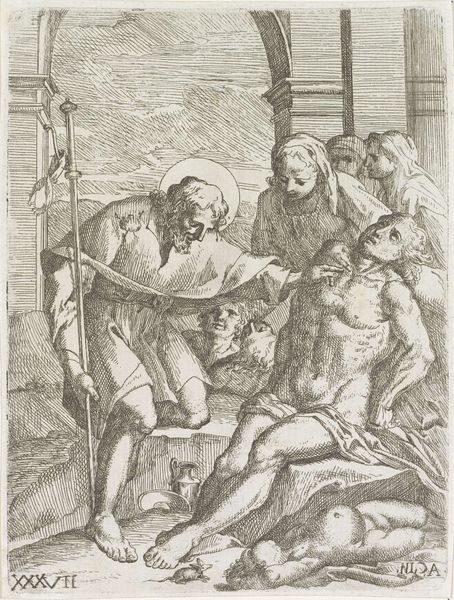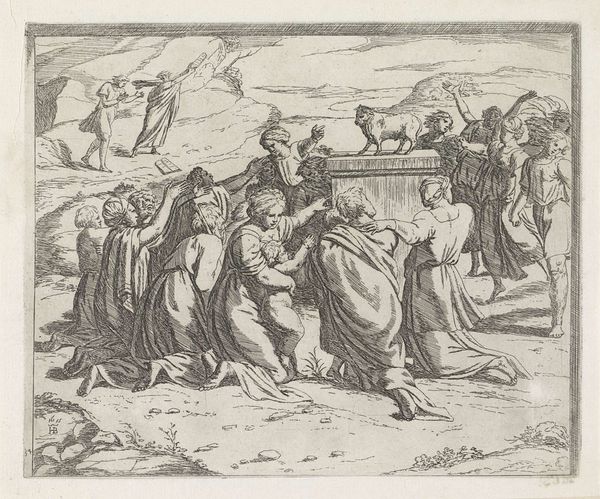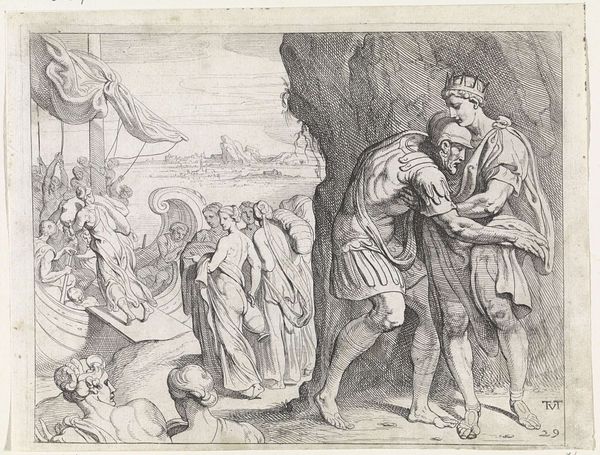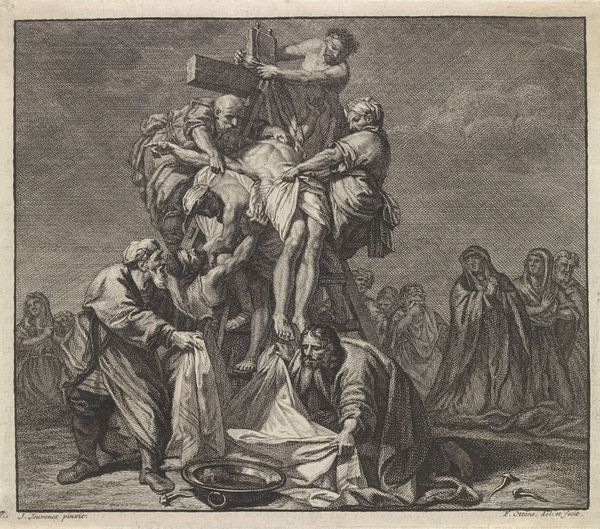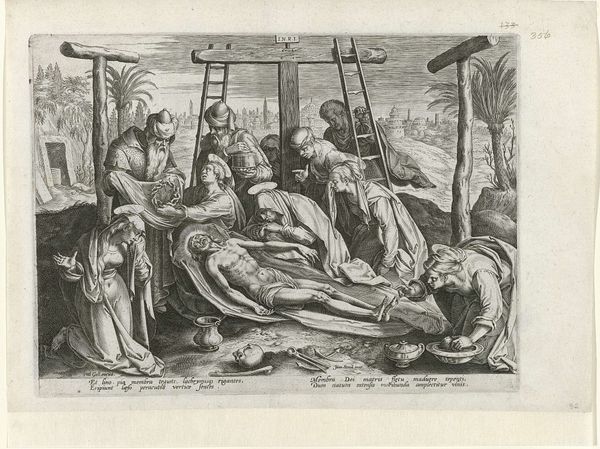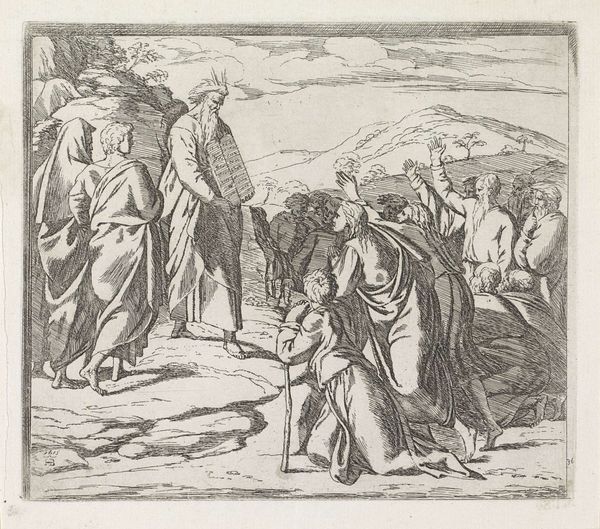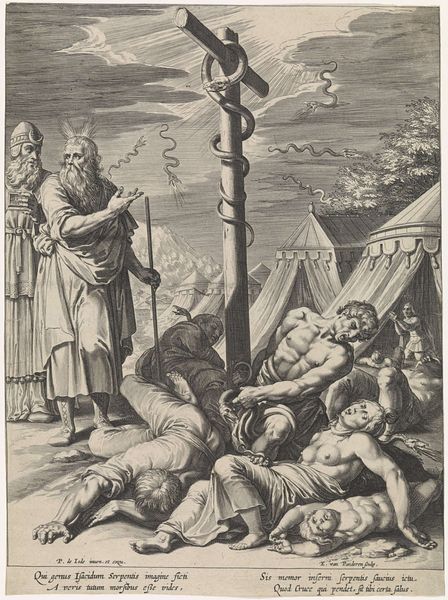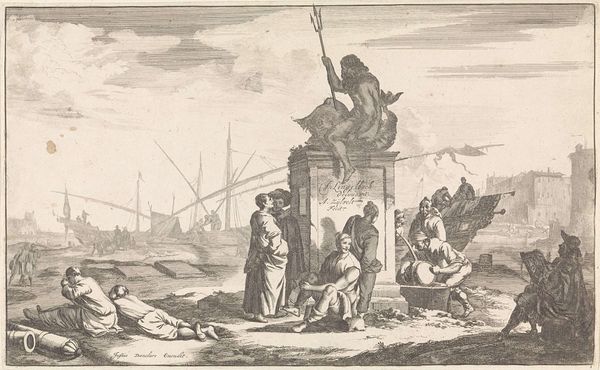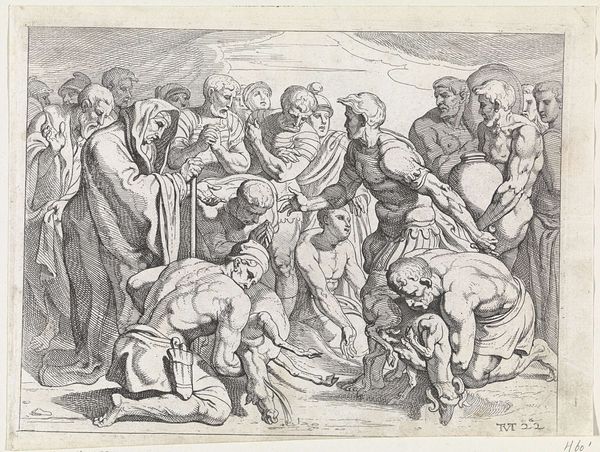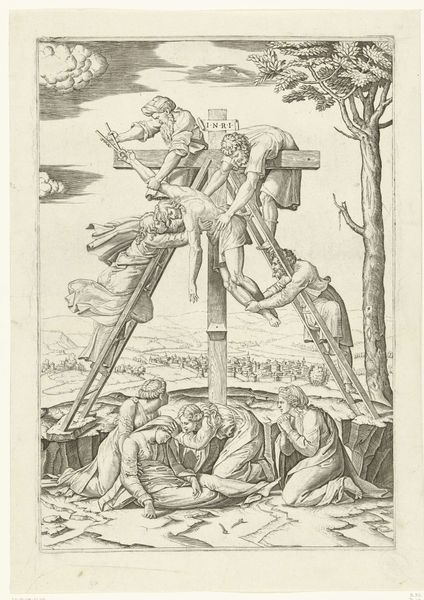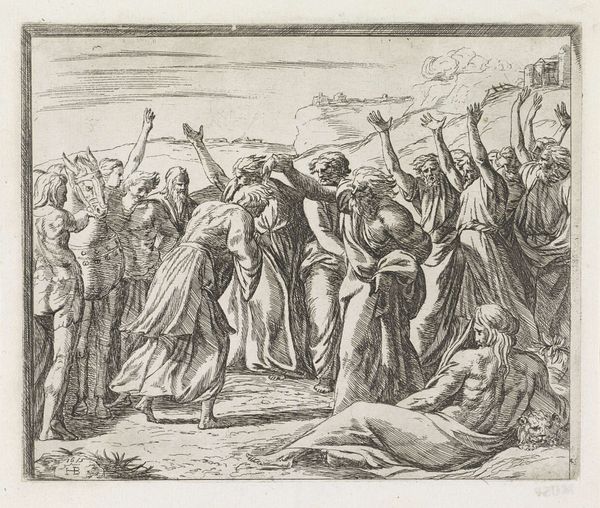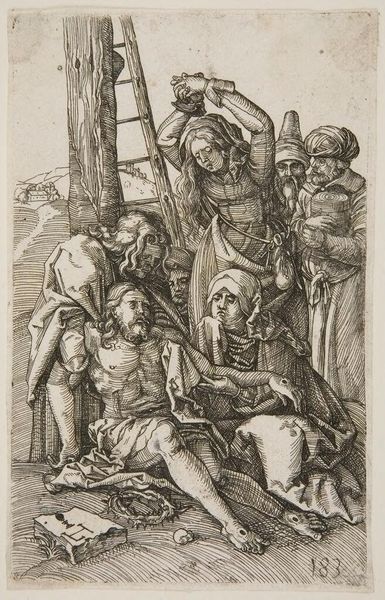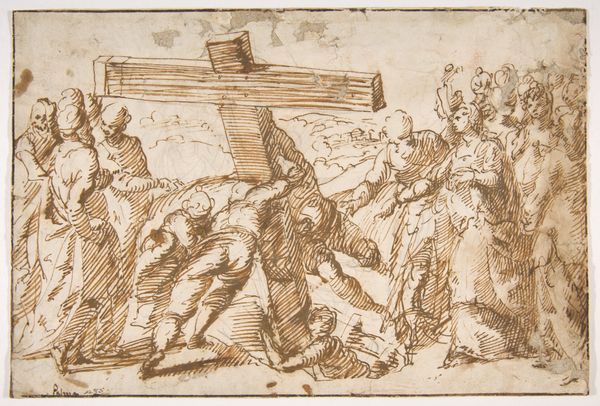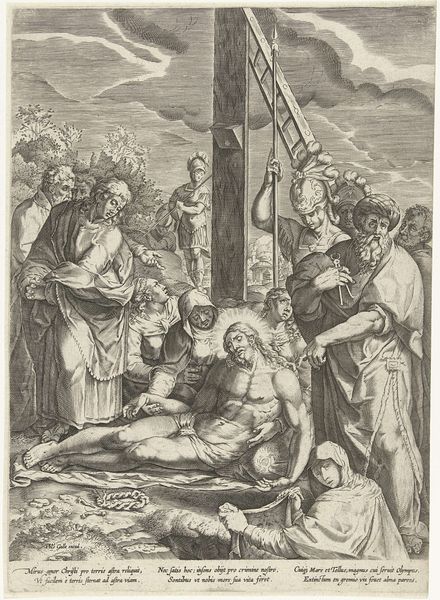
drawing, print, intaglio, paper, pen
#
portrait
#
drawing
# print
#
pen sketch
#
intaglio
#
landscape
#
figuration
#
paper
#
line
#
pen
#
history-painting
#
northern-renaissance
Dimensions: height 118 mm, width 146 mm
Copyright: Rijks Museum: Open Domain
Curator: Up next we have, 'Bewening van Christus,' or 'The Lamentation of Christ' created by Augustin Hirschvogel in 1548. It’s an intaglio print, using pen and ink on paper. The scene presents Christ’s body being mourned after the crucifixion. Editor: My gut reaction is melancholy. It's minimalist and almost feels desolate, like grief etched onto the page itself. The starkness of the lines really drives home the sorrow. Curator: That sparseness is key. The artist’s hand is evident in the delicate, almost fragile lines, particularly in the landscape details—it speaks to a vulnerability within the medium that amplifies the work’s emotion. Editor: Indeed. It’s a powerful example of using line and composition to convey a clear emotional narrative. Notice the contrast in textures— the flowing drapery against the jagged lines that form the desolate landscape. The towering cross is a visual reminder of sacrifice, almost oppressive in its linear exactness. Curator: Exactly! I read it as almost surgically precise, contrasting with the flowing robes. To me this reflects not only Christ’s sacrifice, but that moment when all the events came crashing down. The formal balance gives the scene the look of a history painting despite the smaller scale. Editor: Do you think that focus on geometry and order undermines the grief on display, somewhat? By organizing his subjects around this vertical and horizontal grid, does Hirschvogel sacrifice some raw emotion? Curator: Well, you could say that it reflects a Renaissance sensibility that sought to reconcile faith with humanist philosophy, a belief in a higher order that makes this terrible scene purposeful. Even though its origins and cultural associations are pretty cut and dried, there’s this ethereal presence in the lines that just leaves you with this lingering uncertainty. Editor: It seems to echo even now! Very powerful—the technique makes this image echo forward to us across time. Curator: It’s interesting how art made so long ago can still move us, provoke thoughts, and give shape to our present. Editor: Absolutely. There’s a sense of profound meditation within these minimalist lines that feels both intimate and grand.
Comments
No comments
Be the first to comment and join the conversation on the ultimate creative platform.
